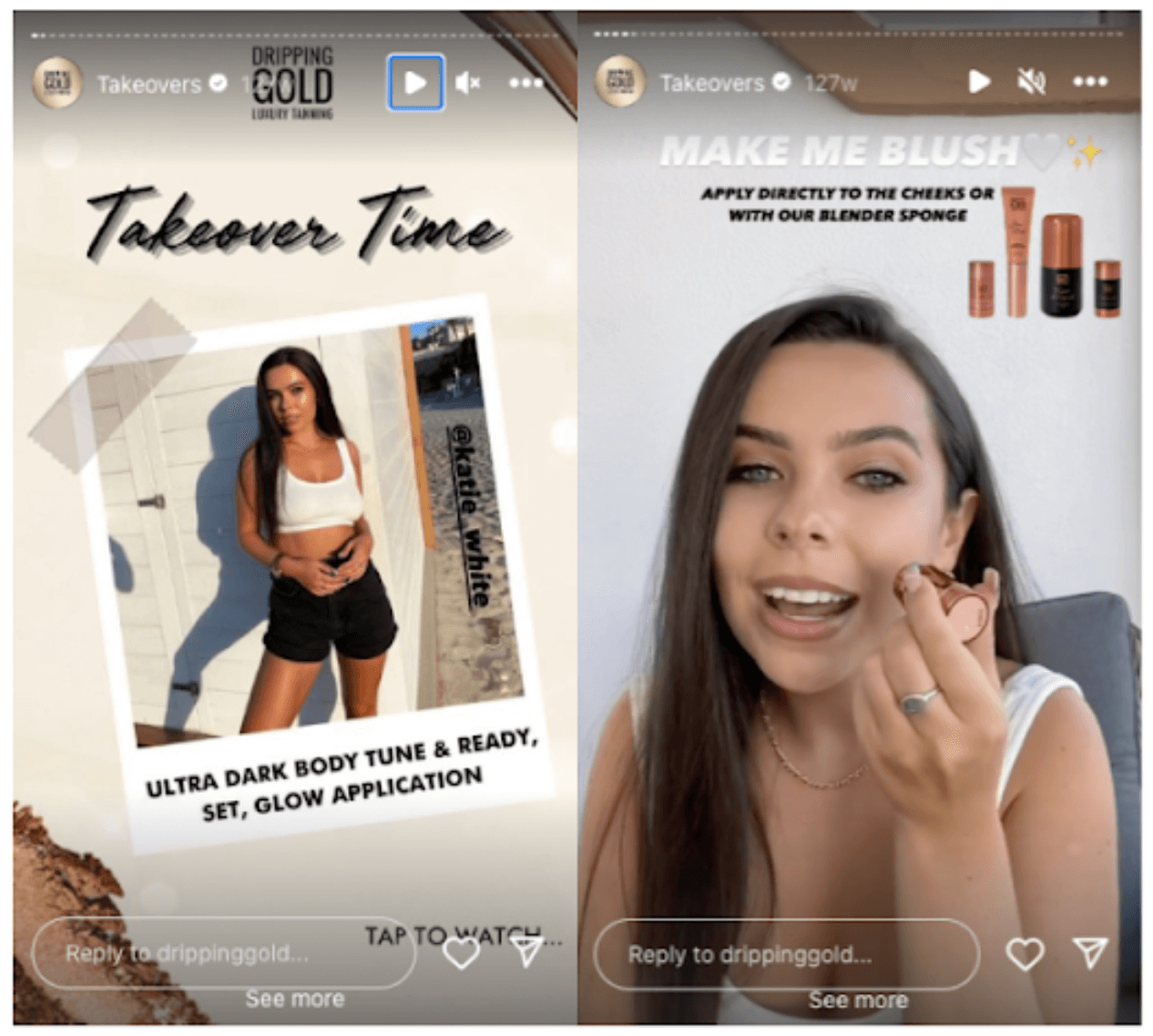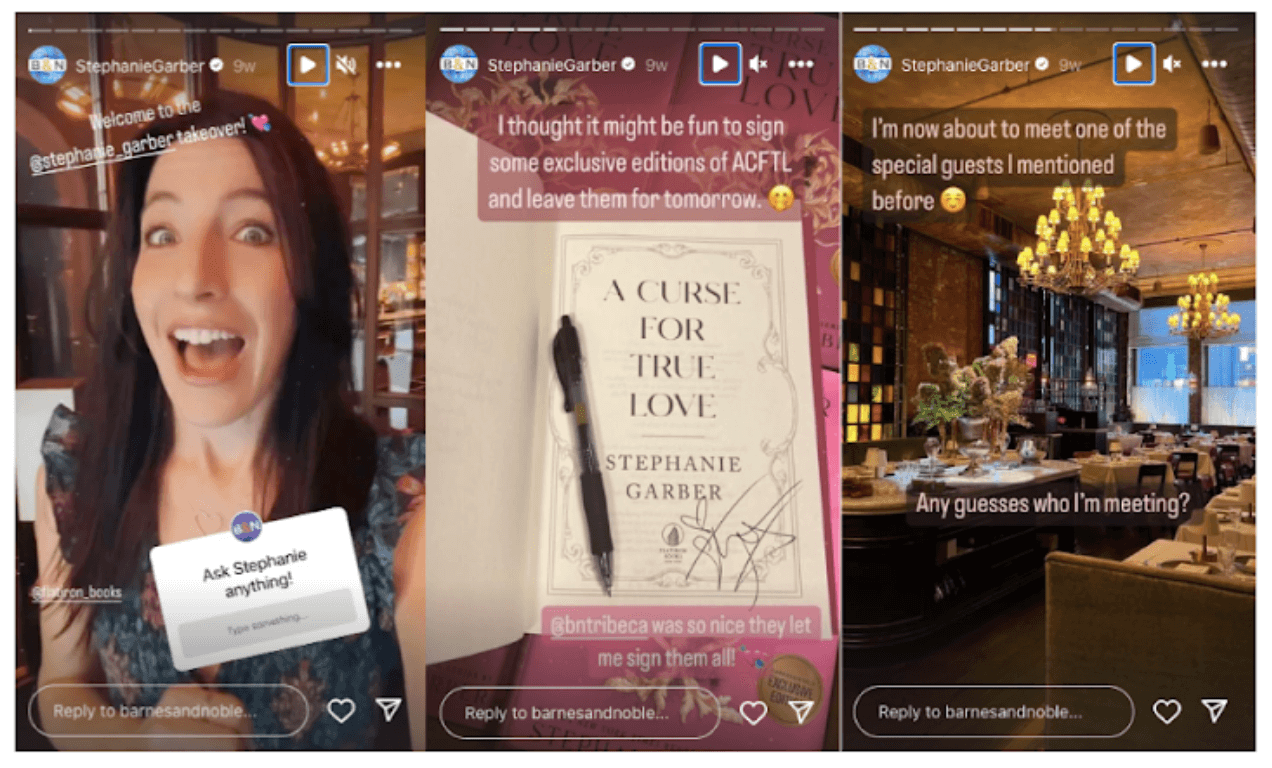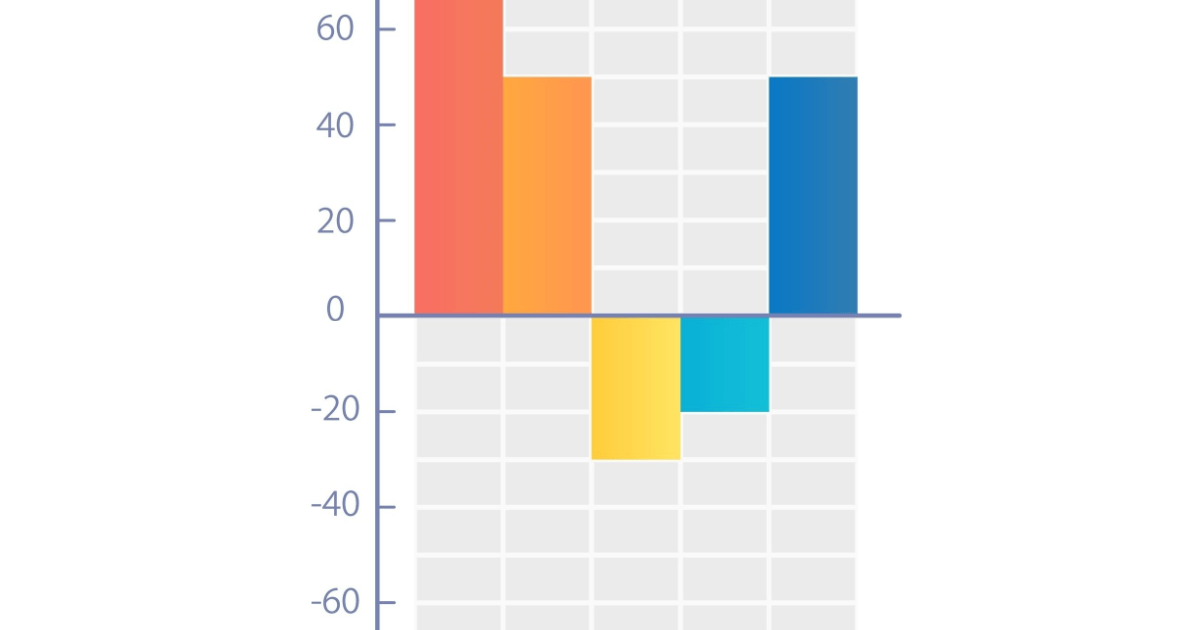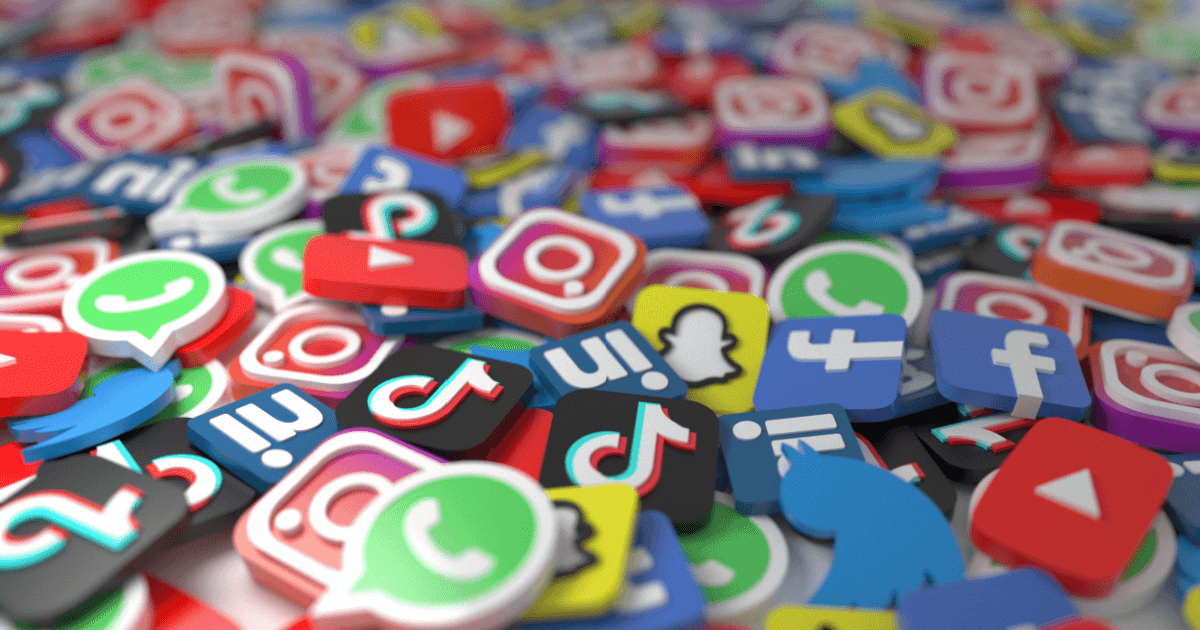March 6, 2024
The concept of sharing the spotlight isn’t super appealing. Even if you’re not a Broadway diva, you want your brand to be the star at all times. Your channels, your products, your narrative. Right? Not so fast. In the context of social media, allowing others into your digital stage with a takeover can actually increase the attention your brand gets.
After all, some of the best performances happen when an artist steps aside and allows someone else to shine. It adds a unique, shall we say, flavor to the entire spectacle.
Social media takeovers, a strategy where you temporarily hand over your brand accounts to someone else, require that you step out of your comfort zone and allow fresh, diverse voices to echo through your social channels.
These voices, whether they belong to influencers, industry experts, or even your own employees, can captivate your audience in ways you might not have imagined.
Chapters:
- What is a social media takeover?
- Why brands should run social media takeovers
- How to plan and execute a successful social media takeover
- Examples of social media takeovers in action
- Unlock the full potential of social media
What is a social media takeover?
A social media takeover is a strategic move where an external influencer, celebrity, or internal team member takes the reins of your brand’s social media accounts for a short period. During this period, the guest takes charge of creating and posting content, interacting with your audience, and essentially representing your brand’s voice on social media.
The concept thrives on diversity and freshness. The guest brings their own style to the table, offering your audience a different perspective they don’t usually see.
In a social media takeover, your partner typically has the freedom to create content that aligns with their personal brand and your brand’s values and goals. The key is finding the right balance between the guest’s creativity and your brand’s messaging.
Why brands should run social media takeovers
Influencers and other user-generated content (UGC) creators have a lot of sway with consumer audiences. And this influence is shaping how people shop and interact with brands online. According to our internal research, three out of four consumers say their shopping behavior is significantly influenced by social media, with 60% making purchases directly through recommendations or links from influencers.
By taking part in a social media takeover, you tap into creators’ credibility, reach, and ability to impact consumer decisions. It’s an effective way to leverage the trust and rapport that they have built with their audience, translating it into increased brand visibility, engagement, and, ultimately, sales.
We know consumer attention is fragmented and fleeting. Social media takeovers are an opportunity to capture interest in the midst of all the content and drive consumer action. They provide a platform for you to showcase your products in a relatable and authentic manner, making the shopping experience more engaging and personal for the consumers.
How to plan and execute a successful social media takeover
You can’t just give an influencer free rein to do whatever they want and call it a day. You have a brand to protect. And every action taken under your banner should reflect its values, voice, and objectives.
1. Set your goals
Takeovers are smaller, time-bound strategies that should fit into your broader social media strategy. Before scouring Instagram for the ideal influencer, take a beat to define clear and measurable goals. This will set the foundation for a successful campaign that benefits both you and the creator.
Are you aiming to increase follower count, boost customer engagement, or generate buzz around a new product launch? Whatever your goal is, it will require a tailored approach. If increasing brand awareness is your aim, you might focus on reaching a wider audience through an influencer with a substantial following.
On the other hand, driving sales might involve collaborating with a smaller creator known for their persuasive product recommendations.
The more specific your goals, the easier it is to measure success post-campaign. Instead of a vague objective like “increase engagement,” think in terms of tangible metrics — e.g. a 20% increase in interactions on your posts during the takeover period.
2. Choose the right platform and format
Which of your branded channels should you hand over? The choice comes down to where your target audience spends their time and how they like to consume content.
Let’s say your audience is on the younger side and prefers visual storytelling. In this case, Instagram, YouTube, or TikTok are your best bet. Here, product tutorials or behind-the-scenes stories can generate a lot of attention. For a more conversation-driven approach, X (the blue bird formerly known as Twitter) or LinkedIn are more suitable. These platforms are excellent for hosting Q&A sessions, sharing insights, or discussing trends.
The format of your social media takeover should also resonate with your audience’s preferences. Do they enjoy live interactions, or are they more inclined towards curated posts? Instagram Stories or TikTok videos are great for dynamic, engaging content, while X threads are ideal for informative discussions.
3. Find the perfect takeover partner
Time to cast the lead role. You can go straight to the source (social media channels where creators are already active) to kickstart your influencer search. Use hashtags and track your brand mentions, or look for micro-influencers that already follow and engage with your brand.
If you have the budget for it, influencer marketing platforms cut down on the amount of browsing you have to do. They immediately show you relevant influencers to your industry and audience.
Once you have a list of potential collaborators, study their content more closely to avoid mismatches — like a luxury brand partnering with an influencer known for budget shopping. That’s just asking for a one-way ticket to Cancelled City.
While you want someone with healthy engagement metrics, don’t make your choice based on numbers alone. Choosing someone who genuinely appreciates and understands your brand will come across as more authentic to the audience than a cash grab with a very popular influencer.
4. Craft a collaborative content plan
This is where the magic begins to take shape. The part where you blend the influencer’s style with your brand’s message so that the content resonates with both your audiences.
Start with a meeting between your team and the creator. Discuss themes, ideas, and messages that align with your campaign goals, and decide on the types of content that will be most effective and that the influencer excels at. Will it be behind-the-scenes stories, product demonstrations, or Q&A sessions?
Once you agree on the content, develop a social media calendar that outlines what will be posted and when, including the announcement of the takeover on both accounts. It should take into account the best times to post for optimal engagement, depending on your audience’s online activity patterns.
Be prepared to make adjustments based on real-time feedback. It’s great to have a plan to guide the takeover, but if certain types of posts end up resonating more with your audience, consider tweaking your plan to include more of that content.
5. Manage permissions and security
The trickiest part of a social media takeover is deciding how much access to grant your collaborator. You need to maintain control and safeguard your brand’s confidential data while allowing enough flexibility for the influencer to be creative and engaging.
Temporary access is the most balanced choice. Instagram, X (Twitter), Facebook, and LinkedIn all allow you to add collaborators to your account without handing over login credentials. This way, creators can engage directly with the audience via comments, Q&As, and reactions.
However, these permissions allow collaborators to see analytics and data insights, which might be something you don’t want or the legal team won’t allow. Plus, TikTok doesn’t have the option of adding someone else unless you’re collaborating on ads. You can circumvent this in one of two ways:
- Have the influencer hand over content (so your team can post it)
- Share login credentials directly
With a content hand-off, you don’t have to worry about permissions or the influencer seeing more than they should. On the other hand, it keeps them from interacting with your audience in real time, which credential sharing allows. There are more risks associated with this approach, but if you feel comfortable doing so, you can change the password at a later time.
6. Launch the takeover
Before the big day, make sure you and your partner build excitement by announcing the takeover in advance. Share posts on your social media channels (even those that won’t be taken over) introducing the influencer and giving a sneak peek of what followers can expect.
The first post should grab attention, set the tone for what’s to come, and encourage followers to stay tuned. Throughout the takeover, keep the communication between your team and the influencer open so that any last-minute changes or updates are smoothly handled.
As the takeover unfolds, monitor the engagement and encourage the creator to interact with the audience. Responding to comments, sharing insights, and keeping the conversation going are all key to maintaining momentum.
Don’t forget to capture the highlights — these can be used for post-takeover content, helping to extend the life of the campaign and providing valuable content for future marketing efforts.
7. Analyze your performance and gather insights for future campaigns
Analyzing the results of your social media takeover gives you a complete picture of what worked, what didn’t, and how you can improve future campaigns.
Start by examining key metrics related to the goals you first set, such as engagement rates, follower growth, website traffic, and conversion rates. Tools like Google Analytics or using a social media management platform provide a wealth of data on this front.
Be as granular as possible — look at which posts, stories, or tweets performed the best. Read through comments and messages to gauge the audience’s reactions and perceptions. Did they find the takeover informative, entertaining, and engaging?
This is also a time to reflect on the partnership itself. Was the influencer’s communication style and content in line with your brand? Did they bring new ideas and perspectives that benefited your campaign?
Once you gather and analyze the data, create a comprehensive report consolidating all the findings. This document should highlight the successes, areas for improvement, and recommendations for the next takeovers. It will also serve as a blueprint to brainstorm ideas for further campaigns that follow this format.
Examples of social media takeovers in action
Don’t just take our word for it. Check out how three different brands leverage takeovers to keep their content fresh and their followers glued to their social media feeds.
Dripping Gold highlights influencer takeovers on their profile
Dripping Gold, a luxury tanning products brand, knows the power of user-generated content and its effectiveness at promoting authenticity, engagement, and customer loyalty. The brand often partners with influencers to produce a steady content stream that populates their Instagram and TikTok accounts. One of their preferred strategies is — you guessed it — social media takeovers.
Dripping Gold often taps young female influencers to partner with, known for their fashion, makeup, and lifestyle content. Creators like Katie White (pictured above) share long videos on the brand’s Instagram Stories showcasing how the audience can use Dripping Gold’s products to create makeup looks or achieve the perfect tan.
To ensure the longevity of the collaborations (the best content is evergreen content), Dripping Gold pins all of the takeovers to their Instagram highlights. This decision allows followers who might have missed the live events to view the content at their leisure, further extending the reach and impact of the takeovers.
Stephanie Garber engages with readers through the Barnes & Noble account
Stephanie Garber is a beloved young adult writer. In the days leading up to the release of her eagerly anticipated book, “A Curse for True Love,” Barnes & Noble invited Garber to take over their Instagram Stories for a cool 24 hours.
Throughout the takeover, the author offered Barnes & Noble’s followers an intimate look into her day, including sneaky book signings and snapshots of her lunch meetings. The day’s highlight was a live Q&A session, where Stephanie allowed fans to engage with her directly and ask about the novel, book recommendations, and her dream travel destinations.
The takeover was a smart move for two reasons: first, it leveraged Stephanie Garber’s personal brand and loyal fan base to drive anticipation for her new book. Second, it provided Barnes & Noble with engaging, authentic content that resonated with their audience of book lovers.
Fenty Beauty dedicates every Friday to a social media takeover
UGC and influencer content are the pillars of Fenty Beauty’s social media strategy. The brand’s Instagram and TikTok feeds are verifiable galleries of real-life product applications, with actual users and influential beauty enthusiasts taking up more space than branded content.
One of the many ways Fenty Beauty hands over the mic is through takeovers. Back in its earlier days, the brand dedicated Fridays to creators from various backgrounds, where they demonstrated everything from achieving the perfect winged liner to creating a flawless foundation routine (using Fenty Beauty products, of course.)
And they didn’t stop at Instagram. Instead of letting the content sit idly by, Fenty extended its life and reach by compiling the best takeovers into YouTube videos for their 900K+ subscribers to enjoy.
Unlock the full potential of social media
Takeovers are a dynamic way to showcase brand personality and keep your content from getting stale. But (there’s always a but) they’re just a fraction of the broader spectrum of strategies that drive consumer action on social media.
Social commerce is revolutionizing how brands interact with their audiences, blending social media’s immersive and interactive nature with the convenience of online shopping. With shoppable images and videos now a feature of most social media channels, they become more than marketing tools. They become powerful sales channels.
Read this Ultimate Guide to Social Commerce Conversion and hop on the social commerce train before it leaves the station.













